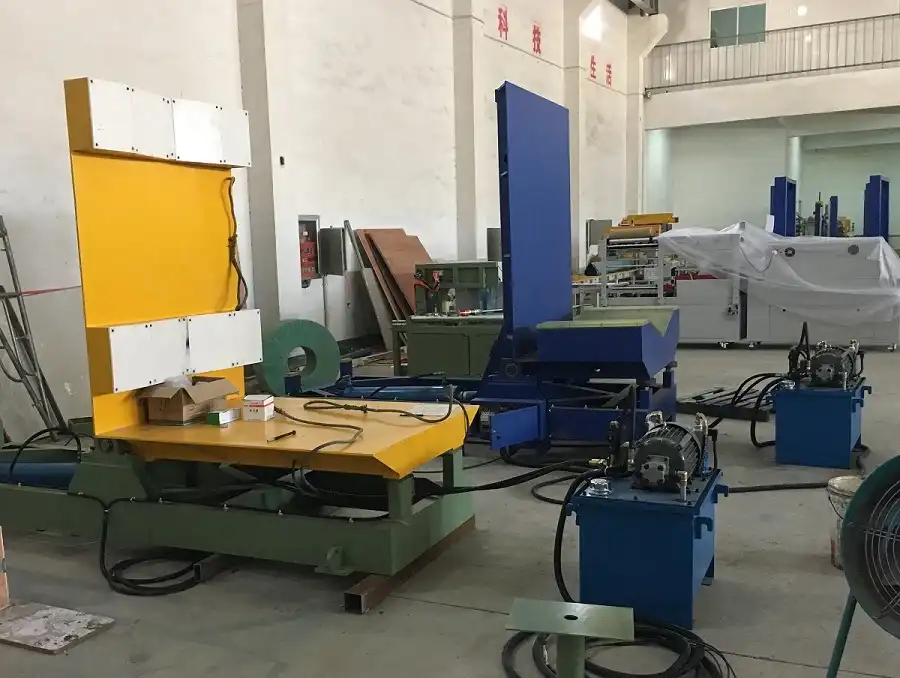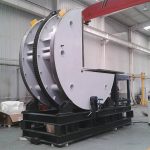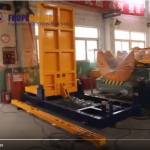Design of the Hydraulic System Structure for a Fully Hydraulic Truck Bogie Upender

Introduction
The design of a fully hydraulic truck bogie upender’s hydraulic system structure involves significant improvements and optimizations over traditional models. These advancements broaden the applicability of this hydraulic system, offering greater flexibility and adaptability across a wide range of industrial uses. Furthermore, these optimizations contribute significantly to the development of future hydraulic systems in related mechanical fields, setting a solid foundation for innovation.
In today’s world, the mechanical industry is a fundamental pillar of a nation’s economy, driving not only industrial productivity but also contributing to social progress. As economic globalization influences domestic industries, the influx of foreign technologies and brands into China has become the norm, prompting Chinese industries to adapt and innovate to meet new market demands. Given this context, refining and enhancing the hydraulic systems of fully hydraulic truck bogie upenders has become an urgent priority, especially as manufacturers strive to meet rigorous performance standards set by large-scale production enterprises.
Modern hydraulic technology has evolved into a highly integrated field, merging seamlessly with microelectronics, computer technology, and sensor technology. This fusion has given rise to a comprehensive automation system encompassing drive, control, and monitoring capabilities. Today’s hydraulic systems have achieved impressive standards in high-pressure performance, high speed, durability, and high-power applications. They are also becoming increasingly compact, making them suitable for various applications where space-saving is essential. Innovations in proportional and servo control, digital technology, and computer-aided design (CAD) and testing (CAT) systems have further enhanced hydraulic performance. Key advancements also include microcomputer control, mechatronics integration, electro-hydraulic systems, and a heightened focus on energy efficiency, reliability, and pollution control. These developments are shaping hydraulic technology into a sophisticated, integrated automation field with broad industrial applications.
Currently, hydraulic systems are applied across many industrial sectors, including mechanical engineering, construction, mining, metallurgy, and marine technology. The versatility of hydraulic systems allows them to perform various tasks, such as heavy lifting, pushing, and precision control, which are vital to numerous applications. The primary areas of application for hydraulic technology can be summarized as follows:
- Lifting and Material Handling: Hydraulic systems are widely used for lifting and transporting heavy loads, particularly in machinery that requires significant driving power, such as cranes, winches, and other heavy-duty equipment.
- Heavy-Duty Force Applications: Hydraulic systems are essential for tasks requiring large forces, such as pushing, compressing, and excavating. This category includes hydraulic presses and injection molding machines, where strong and precise force application is critical.
- High-Precision, High-Response Control: Hydraulic systems play a crucial role in high-precision applications, such as controlling the posture and movements of aircraft and missiles. This requires rapid response and fine-tuned control, highlighting the reliability and sensitivity of hydraulic systems.
- Automated Multi-Program Operations: Hydraulic technology is integral to complex automated processes, such as those found in assembly lines and CNC machining centers, where multiple actions and sequences need to be executed automatically and accurately.
Design Improvements and Structure of the Hydraulic System in Fully Hydraulic Truck Bogie Upenders
The primary focus of designing the hydraulic system for a fully hydraulic truck bogie upender is to enhance functionality and ensure smooth and safe operations during heavy-duty handling tasks. The system comprises several key components that work together to deliver optimal performance, each carefully designed to meet the upender’s demands.
- Optimized Hydraulic Drive SystemIn a truck bogie upender, the hydraulic drive system is crucial, providing the necessary power to rotate and maneuver heavy bogies efficiently. The system has been optimized to deliver consistent force while allowing precise control over rotation speed and positioning. By incorporating variable displacement pumps and advanced servo valves, the hydraulic system can adjust to different load requirements, optimizing energy use and reducing wear on components.
- Proportional and Servo Control IntegrationProportional and servo control technologies are incorporated into the upender’s hydraulic system to achieve high precision and responsiveness. Proportional control allows the system to adjust force and speed smoothly, providing the operator with fine-tuned control over the rotation process. Servo control, on the other hand, enables accurate positioning and dynamic responsiveness, especially when handling variable loads or complex movements. These control mechanisms are essential for ensuring smooth, stable rotation and reducing the risk of mechanical stress on the equipment.
- Digital Control and Monitoring SystemsA key innovation in modern hydraulic systems is the integration of digital control and monitoring. By incorporating computer-based control systems, operators can monitor and adjust parameters such as pressure, flow rate, and temperature in real-time. This level of control ensures the system operates within safe limits, reducing the risk of overheating or overpressure situations that could damage components. Additionally, digital controls facilitate easy troubleshooting and system diagnostics, enabling operators to detect issues before they become significant problems.
- Advanced Hydraulic Seals and Fluid FiltrationIn a high-performance hydraulic system, maintaining clean hydraulic fluid is essential for optimal efficiency and longevity. The upender’s hydraulic system includes advanced filtration systems that remove contaminants from the hydraulic fluid, protecting sensitive components such as pumps and valves. High-quality hydraulic seals are also used to prevent leaks, ensuring the system maintains consistent pressure levels and operates without interruptions.
- Compact, Modular Design for FlexibilityThe hydraulic system’s compact and modular design allows for flexible configuration, which is advantageous for various industrial applications. The modular setup also simplifies maintenance, as individual components can be easily replaced or upgraded without disassembling the entire system. This design flexibility enables the hydraulic upender to adapt to different bogie sizes and weights, broadening its usability across multiple types of trucks and rail applications.
- Energy Efficiency and Environmental ConsiderationsModern hydraulic systems are increasingly focused on energy efficiency to reduce operational costs and environmental impact. In the truck bogie upender’s hydraulic system, energy-efficient pumps and motors minimize energy consumption during operations, especially when idle or handling lighter loads. Furthermore, hydraulic fluid recycling and filtration systems reduce waste, aligning with environmental sustainability goals.
Importance of Hydraulic Technology in Industrial Applications
The extensive adoption of hydraulic technology in industrial applications underscores its critical role in modern manufacturing and engineering. Hydraulic systems are versatile and capable of providing powerful, precise control across various operations. They allow industries to meet demanding performance requirements while ensuring safety and efficiency, which are particularly important in applications such as truck bogie upenders. The reliability and adaptability of hydraulic systems make them indispensable in industries ranging from automotive and aerospace to heavy construction and logistics.
As hydraulic technology continues to evolve, integration with electronic and digital systems enhances its effectiveness. The development of computer-aided design (CAD) and testing (CAT) software further accelerates advancements, enabling engineers to design, test, and refine hydraulic systems with precision. As hydraulic systems become more intelligent, energy-efficient, and eco-friendly, they will play an even greater role in advancing industrial automation and supporting the global transition toward sustainable manufacturing practices.
Conclusion
The design of the hydraulic system structure in a fully hydraulic truck bogie upender represents an important step in optimizing equipment performance, safety, and efficiency. Through improvements in drive systems, advanced controls, digital monitoring, and energy-efficient technologies, this system exemplifies the potential of modern hydraulic technology in industrial applications. Hydraulic systems not only streamline material handling but also provide the versatility and reliability required in demanding environments. As industries continue to evolve, fully hydraulic upenders will remain essential, supporting advancements in automation and contributing to the broader goals of sustainable and efficient manufacturing.

Get Your Best Solution !






